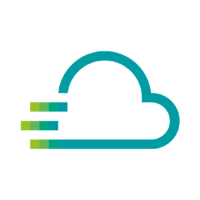Companies are sitting on a goldmine of data, but many fail to harness its potential due to inefficient collection and storage methods, or in the worst case, they are not doing anything with their data at all. The solution lies in implementing smart data strategies using digital sensors and cloud-based platforms to extract meaningful insights, like improving production efficiency.
Data treasure in the company: From Blind Flight to Smart Data
In most companies, especially in production facilities, manufacturing and big industries, lots of data accumulates automatically, such as output, power consumption and the status of machines.
However, the difference lies in how companies deal with this data. In the simplest variant, it is conceivable that data is collected and stored manually. Systematic and efficient analyses can hardly be implemented in this way, even (or especially) if they are using an Excel file.
In contrast, digital sensors enable continuous monitoring of important data – production quantities, utilization, runtime and availability of a machine and individual functions, energy consumption and machine condition (“machine health”). A good example would be an employee who checks the pressure display of a gas tank at regular intervals and documents the values in a list (which disappears in a file folder if nothing appears conspicuous).
If critical limit values are exceeded, an automatic alarm can be triggered. The potential for improved machine park availability and other added values is great.
In practice, two scenarios are typical in the industry sector:
❌ The digital data capability of machines and plants is unused. Data remains “in the silo” on site, is not transmitted and evaluated. If the production management conducts data evaluations, then only selectively and locally. There is no overall view of the production environment or of several locations.
❌ The data is routinely and automatically stored in an unsystematic way with a lot of volume and from tens of machines. But no use can be made of the treasure trove of data because the data are in separate systems (“island solutions”) and the technical connection to a central storage location seems too costly. And even if this raw data is available in one place, a company may find it too costly to analyze and interpret.
Small, smart selection: Smart Data
Things get interesting when machine data can be used specifically for corporate management – for example, for asset (device) management. This is always possible when relevant information can be extracted from mountains of data. This requires smart data – meaningful data sets that are extracted from larger amounts of raw data. Using the gas tank example from above, but this time equipped with a digital pressure gauge and constantly transmitting its values to a central cloud solution, the following advantages arise:
✅ Ad-hoc availability of information on all devices, at any location.
✅ Management can make decisions at any time and not only when, for example, the production manager reads the reports of the night shift in the morning.
✅ Employees can notice problems based on time series analyses and visualized historical data that is accessible and comprehensible. For instance, the employee from our example could notice that the frequency of pressure drops is increasing over several weeks and act accordingly, in order to prevent the total failure of the important plant in good time.
This kind of added value can be achieved for machines and plants of all kinds. Properly implemented, the use of machine data becomes a key factor in production. Performance and quality within production increase, as does the availability of the machines. This significantly increases the competitiveness of a company. And it can be measured, for example, by the overall equipment effectiveness (OEE).
You can avoid these risks and use benefits like these with Proficloud.io
Here, sensor data ends up directly in the cloud. Evaluations and visualizations are carried out via our Smart Services, which already have many useful presettings. Especially for small and medium-sized enterprises, this approach is a tangible solution, because the investment costs are comparatively low. Own specialized know-how or a data scientists are not needed. The solution is also scalable, so it can be expanded (or scaled down again) quickly and easily as needed.
Read more about connectivity and data analysis in our free Introductory Guide here:
Additional resources:
- Read our 5 Step Guide on how to get started with Proficloud.io
- How SMEs can get started with IIoT: A Roadmap
- Learn more about Proficloud.io in our Knowledge Hub
- Contact us directly here

